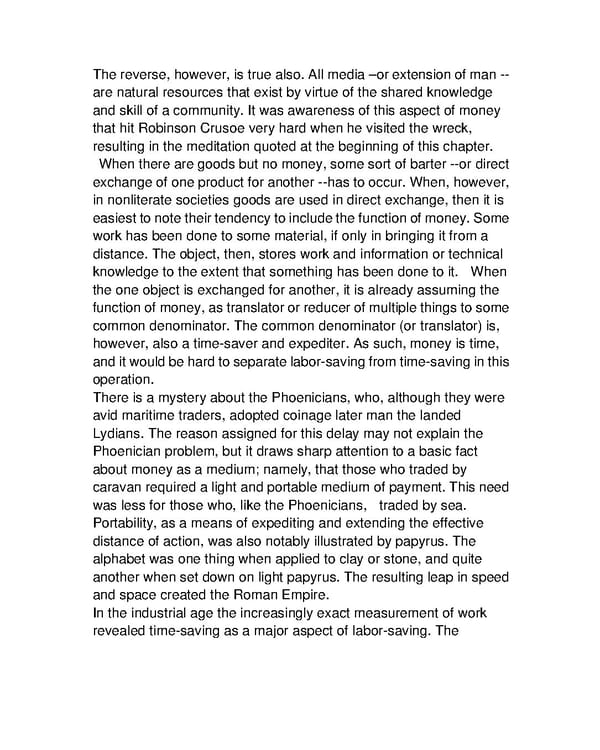The reverse, however, is true also. All media –or extension of man -- are natural resources that exist by virtue of the shared knowledge and skill of a community. It was awareness of this aspect of money that hit Robinson Crusoe very hard when he visited the wreck, resulting in the meditation quoted at the beginning of this chapter. When there are goods but no money, some sort of barter --or direct exchange of one product for another --has to occur. When, however, in nonliterate societies goods are used in direct exchange, then it is easiest to note their tendency to include the function of money. Some work has been done to some material, if only in bringing it from a distance. The object, then, stores work and information or technical knowledge to the extent that something has been done to it. When the one object is exchanged for another, it is already assuming the function of money, as translator or reducer of multiple things to some common denominator. The common denominator (or translator) is, however, also a time-saver and expediter. As such, money is time, and it would be hard to separate labor-saving from time-saving in this operation. There is a mystery about the Phoenicians, who, although they were avid maritime traders, adopted coinage later man the landed Lydians. The reason assigned for this delay may not explain the Phoenician problem, but it draws sharp attention to a basic fact about money as a medium; namely, that those who traded by caravan required a light and portable medium of payment. This need was less for those who, like the Phoenicians, traded by sea. Portability, as a means of expediting and extending the effective distance of action, was also notably illustrated by papyrus. The alphabet was one thing when applied to clay or stone, and quite another when set down on light papyrus. The resulting leap in speed and space created the Roman Empire. In the industrial age the increasingly exact measurement of work revealed time-saving as a major aspect of labor-saving. The
 Understanding Media by Marshall McLuhan Page 159 Page 161
Understanding Media by Marshall McLuhan Page 159 Page 161